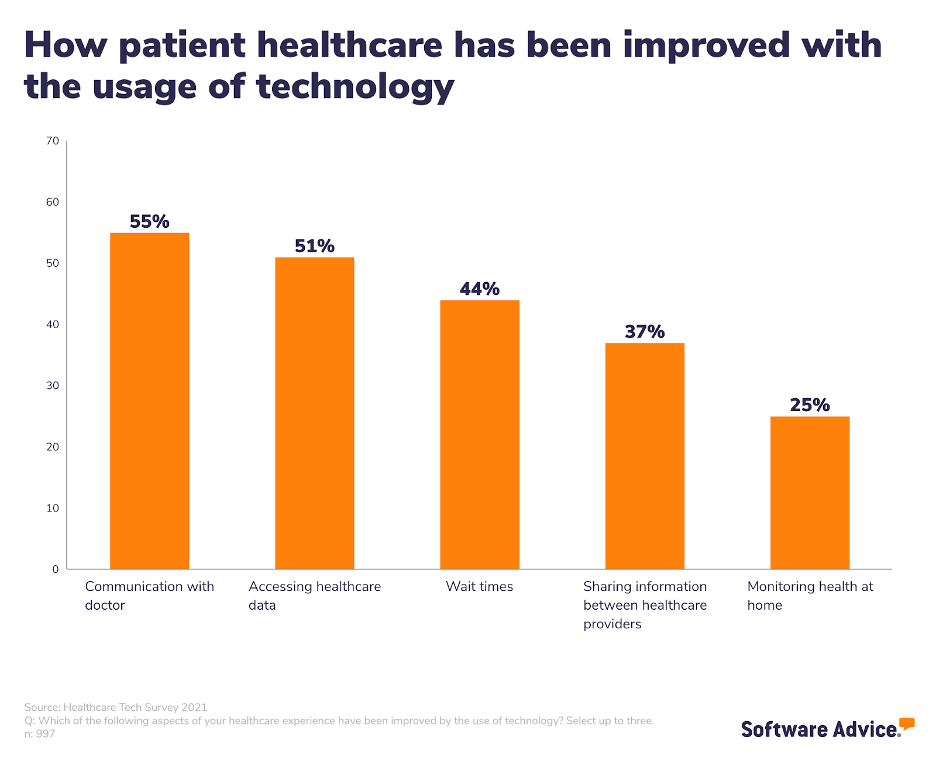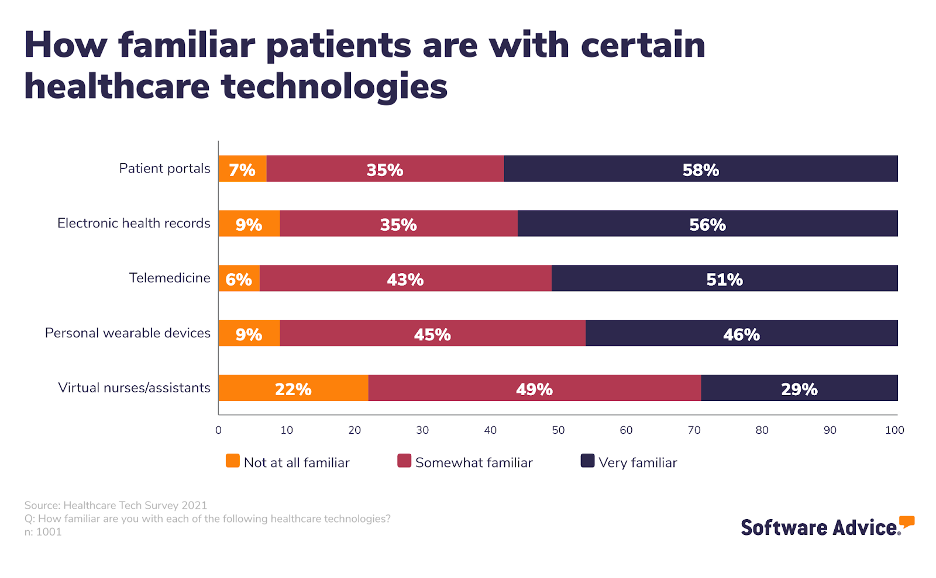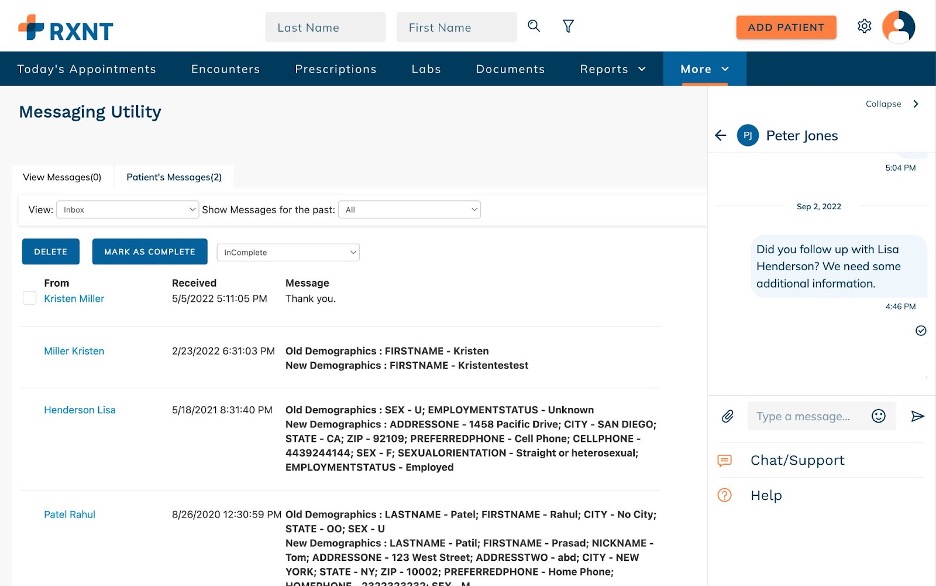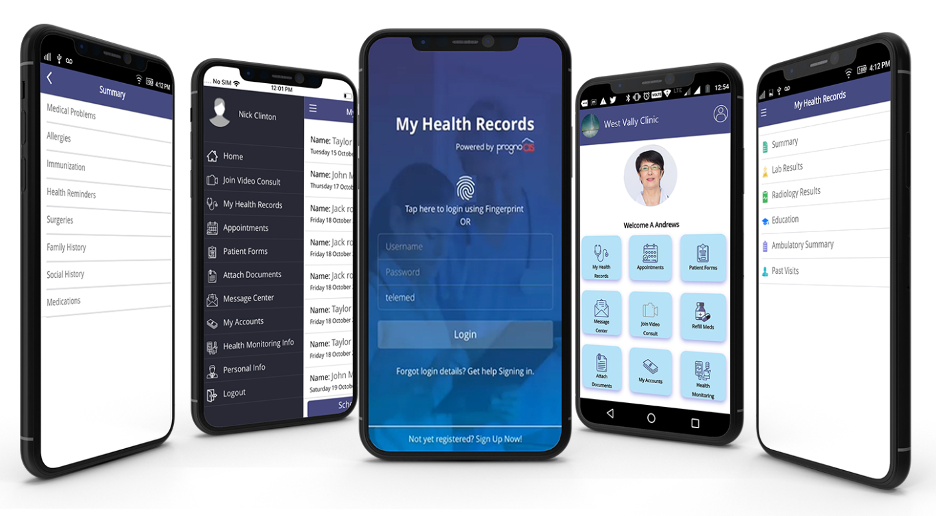How To Increase Patient Portal Use by Educating Patients
If you’re a small to midsize practice owner that wants to increase usage and adoption of patient-facing medical software among your patients to maximize ROI but aren’t sure how to go about it, you should be devoting time to educating and incentivizing your patients and staff.
Practices that prioritize the rollout and communication of patient-facing tech in this way stand to improve their patient experience and increase engagement which will result in more word of mouth referrals and patients with more control over their own health outcomes.
To that end, we interviewed Dr. Rafael Salazar II, a Georgia-based healthcare consultant who has successfully focused on patient engagement and retention strategies. He provided us with insights and helpful tips that your practice can implement in order to improve patient experience and increase patient engagement.
Tip #1: Document where and how new tech is integrated into your practice's patient flow
Whether it’s introducing patients to the patient portal, scheduling software, or the patient engagement software you use, it’s vital to make it standard practice for you to introduce and educate patients on the importance and uses of your digital patient engagement software.
If you’re already using patient engagement software, such as a patient portal, you should map how your patients use your software from the point when they sign up with your practice throughout their entire lifecycle—and be sure to document and track how patients are onboarded.
Here are some questions to consider when determining how patients are onboarded:
Do they have to fill out physical forms in the office, or can they use software that automatically plugs in their answers into charts with patient intake software?
Do they have to call to schedule an appointment, or can they schedule online via patient scheduling software?
Do they need to get prescriptions filled manually, or is that process automated via e-prescribing software?
If they have a question, do they have to call and wait for a doctor to be available, or can they engage with their patient portal to have their question answered?
Each of these touchpoints has traditionally been done in-person or over the phone, but healthcare tech has made it much easier and more convenient for patients to navigate their interactions with your practice.
Once you understand how a patient flows through your practice, you can begin to adjust and improve their experience by introducing new software or maximizing your current software’s effectiveness.
If you have a patient portal, make sure your patients understand that they can communicate with you there, which will be a lot more convenient than calling your office and waiting for an answer. Even if you aren’t able to answer their question right away, they’ll have the peace of mind knowing that someone will see it and get back to them, and it’s more easily managed than emails, because patient queries are all in the same place for you to handle.
Dr. Rafael Salazar II
Healthcare Consultant
If you aren’t checking or encouraging patients to use their patient portals to communicate with you, you might want to reconsider because, according to a Software Advice survey [*], the most common way technology has improved patients’ healthcare is through improved communication with their doctor.

Make sure they understand that using it regularly will make future processes such as prescription refills, checking medical records and care plans, and appointment scheduling more convenient.
If you can, program your online appointment booking system to automatically enroll them in your technology. Once you’ve done this, be sure to remind them of the value that consistently using the software can bring to their overall health.
The point is, you need to be intentional about how you use your software. What’s the point of purchasing expensive, patient-facing software if you aren’t using them to their full potential? That requires monitoring your current usage and making any adjustments to how you interact with it as well as how you train your staff to promote its usage with patients.
Tip #2: Train staff to educate and incentivize patients on new tech
Your patients are familiar with several different types of software and technology you may already be using which means education and enrollment might not be the biggest hurdle to overcome.

However, just because your patients are familiar with some of these types of software doesn’t mean that they’re familiar with your patient portal or your EHR.
Dr. Salazar II educates and encourages his patients to use their patient portal in two ways:
“First, the main incentive is access: access to quick, secure, and individualized communication with their clinician or provider. Using secure messaging and other communication tools, gives patients a level of access not commonly available until recently. Many patients are happy to use portals if they know they're getting access to clinicians. Secondly, we have used packaged services which involve asynchronous telehealth, synchronous telehealth, and access via portals.”
One reason why your patients, especially those who were with you before you made the switch, might not use your technology is because they simply do not know you have one.
A survey about Individuals’ Access and Use of Patient Portals and Smartphone Health Apps by The Office of the National Coordinator for Health Information Technology found that individuals encouraged by their healthcare provider to use their patient portal accessed and used their portal at higher rates compared to those not encouraged. [1]
Fix this by including reminders about the benefits and use cases of your technology with every communication and appointment they make. It might feel like you’re reminding them a lot, but remember that it’s only one reminder every few months for them.
You can also create emails with useful tips about how to access and use the software effectively. Additionally, you can even include links to the software sign-in page with every digital communication you send.

RXNT’s client messaging (Source)
Every member of your care team from front desk to lab techs should be familiar and able to use the technology the way your patients are expected to use it. Additionally, they should all know how to troubleshoot sign-up problems so that they can offer help to any patient who might be confused.
Dr. Salazar II recommends educating patients as early as possible when it comes to learning the ins and outs of your patient-facing tech:
“We have systems that include information and training for patients as they begin their journey with the clinic. Staff is trained how to communicate and instruct patients on the use of patient-facing tech.”
When every member of your staff understands the ins and outs of the software, they’re more likely to be able to convince your patients of the importance. One of the best ways to ensure adoption and sign-up from patients is to keep tablets in the waiting room or in the exam room so you can work one-on-one with patients.
Additionally, you should be offering incentives for using the software. Offering incentives is one of the oldest ways to get people excited about doing something. You can offer a small gift card to the staff member who signs up the most new patients a month. A discount or gift card for the first 15 patients to schedule an appointment each month is another great option.
The rewards don’t have to be spectacular, but any incentive can give your patients and staff a boost to increase usage and ensure you are getting the ROI out of the software you expect.
Ultimately, the data shows that your patients are willing to use your patient-facing technology, so it’s up to you and your staff to educate and incentivize them on their usage and benefits.
Tip #3: Periodically audit your tech stack to evaluate patient usage wins and alternatives
Understanding your patients and how they engage with your software is crucial for improving usage of patient-facing tech among your patients.
In the United States, 55.5% of people use a phone or tablet [2] to access the internet instead of a traditional laptop or desktop computer. That alone should prove the importance of choosing a mobile-friendly option when it comes to selecting the type of software you implement.
Patients who might not have consistent internet access or who might not have a desktop or laptop computer will benefit the most from having a mobile-friendly option.

An example of what PrognoCIS’ mobile-friendly EHR looks like (Source)
This is just one example of why it’s important to audit your current software stack in order to find out where and how your patients are engaging with your patient-facing technology. Run surveys to figure out which parts of your technology patients find most useful and which they don’t.
This is extremely helpful when determining what software to prioritize for potential upgrades, or which software you might not even need anymore because it’s not giving you a return on your investment. Additionally, you might find that you thought patients were engaged with your patient portal when, in reality, many of them don’t even know you have one.
Knowing as much as you can about your patient population and how they engage with your healthcare technology will not only save you money, but it can also make you money. If you educate and improve patient usage, they’ll be more engaged with your practice in a way that makes them more likely to recommend you to other people.
Increasing patient usage is a worthwhile investment
If you’re a small to midsize practice owner who is unhappy with how little your patients engage and interact with expensive patient-engagement software, know that it’s worth the effort. We wish it was as simple as just having it available, but your patients and staff need to be encouraged and incentivized to use it.
They need to understand the benefits and how it can help them improve their experience whether that’s through better access to their healthcare data or convenience.
The good news is that once your patients understand the benefits and are using it, they are more likely to be satisfied with your practice. Dr. Salazar II uses “surveys for patients to gauge their experience and thoughts about the care they've received in the clinic.” He finds that “9/10 patients say that they value online intake and access to portals.”
When you document where and how new tech is integrated into your practice's patient flow, you want to do two things:
Train staff to educate and incentivize patients on new tech
Periodically audit your tech stack to evaluate patient usage wins and alternatives
If you do that, you will increase usage of your patient-facing tech among patients and will see a return on investment that will make purchasing the software worthwhile.
Check these other resources for more information about how to build out your patient engagement strategy:
Survey methodology
[*] In our 2021 Healthcare Tech Trends Survey, we surveyed 1,296 patients within the U.S. in May 2021. We used screening questions to narrow the respondents down to 1,001 with the relevant and timely experience needed to provide accurate answers to these survey questions.
Sources
Individuals’ Access and Use of Patient Portals and Smartphone Health Apps, 2020, HealthIT.gov
Desktop vs Mobile vs Tablet Market Share United States Of America, StatCounter GlobalStats